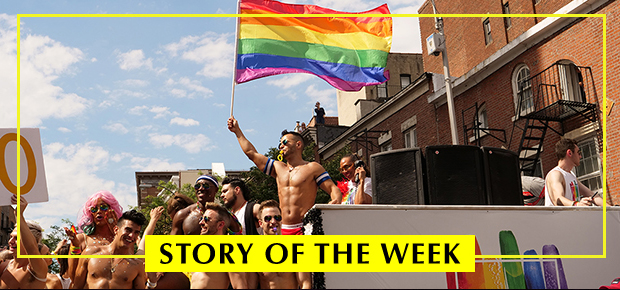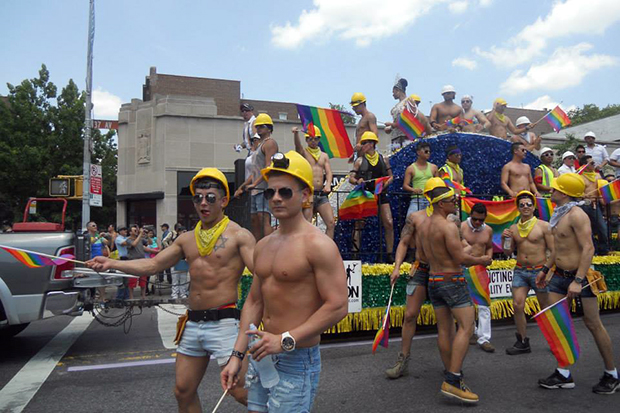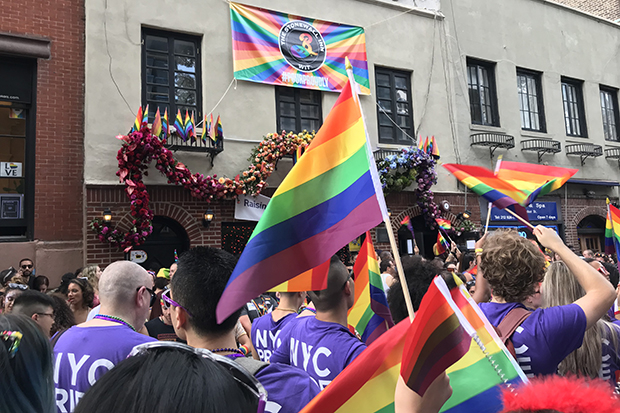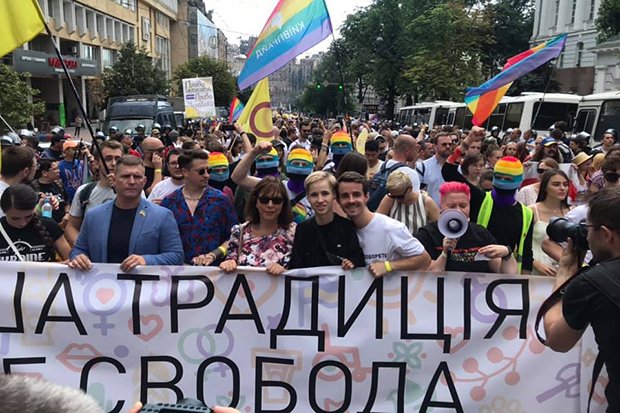The LGBT Pride Parade Is the Biggest Theatrical Event of the Year — Here's What to Expect
The costumes, the sets, and the drama will be on display in cities around the world this weekend.

(© Debsaslaw)
If you've been noticing rainbows everywhere you go this month, don't worry: The leprechauns have not invaded. It's just LGBT Pride month! While this annual celebration of lesbian, gay, bisexual, transgender, and sundry queer people now occupies the entire month of June, its climax is still the event that started it all: the annual LGBT Pride Parade, which takes place in New York City on the final Sunday of the month.
Is it a militant protest for equality, or a lighthearted parade full of fabulous feathers and frivolity? It's both, and the event (commonly referred to as just "Pride") serves as a general assembly for an alphabet soup (LGBTQIA ) of sexual minorities. With such a diverse group of people, one can expect an equally diverse range of expression — and perhaps a little bit of drama.
While the New York parade goes down this coming Sunday, June 30, similar parades have taken place all over the world this month. TheaterMania is committed to covering theater everywhere, which is why this Story of the Week will focus on this most extravagant, inclusive, and accessible outdoor spectacle of the year. It's some of the best theater you'll see all year, and it's totally free.

(© Zachary Stewart)
It's my first Pride! What should I expect?
Expect a show. Big floats and loud music take over a significant portion of lower Manhattan every year for a parade that lasts all afternoon. No matter if you're marching or just watching, Pride calls for a colorful costume — the more outrageous, the better. Just like in the theater, clothing is integral to one's ability to tell a story, whether that story is "T-Mobile loves its gay customers" or "corporations are poisoning Pride."
As I mentioned above, the range of people who identify as LGBTQ is huge, and not all of us agree. I've seen parade contingents of gay Israelis march not far away from people holding banners that read "Queers Against Israeli Apartheid." In 2017, I saw a delegation from a group calling itself "No Justice No Pride" carrying a banner that read "There are no queer friendly cops" right behind a large wedge of motorcycle police waving rainbow flags. Spectators were left to make up their own minds.
While some might bristle at this cacophony of perspectives, I actually love it (and not just because I have a drama fetish). It's a visual manifestation of our diversity, and every year it reaffirms that LGBT people come from all classes, colors, and creeds. Beyond our queerness, the only thing we have in common is our need to vigorously apply sunblock — it's late June, after all.

(© Fulbert)
Why does Pride always occur at the end of June?
On June 28, 1969, the NYPD raided the Stonewall Inn on Christopher Street in Greenwich Village. While this was a common occurrence for gay bars in the 1960s, what happened next wasn't: Instead of just accepting arrest, the queer people at Stonewall fought back, and they were soon joined by an even larger group of supporters outside the bar. This moment is widely considered the beginning of the modern gay rights movement. The first Pride march took place a year later, and subsequent marches around the world now take place in June to commemorate Stonewall. Berliners even call their annual Pride parade "Christopher Street Day."
This year marks the 50th anniversary of the Stonewall uprising. In recognition of that, New York City has been selected to host WorldPride, an event that invites activists and revelers from all over the world to take part in one big international Pride parade. While PrideNYC usually sees around two million participants and spectators, the organizers of this year's march anticipate between four and six million — making this by far the biggest party of the year.
Do you have to be in New York City to celebrate?
Absolutely not. Hundreds of cities and towns hold their own Pride events, and they're not all parades: This year, the city of Hendersonville, North Carolina held its very first LGBTQ Pride picnic. I've always been particularly fond of the annual Rainbow Kite Festival that serves as the culmination of Pride celebrations in Colombo, Sri Lanka.

(© KyivPride)
Some of the most significant Pride events this year are happening outside of the United States: Last weekend, Kiev held its biggest and most successful Pride march ever, with over 8,000 participants and very few disruptions from counterprotesters. It's a big improvement on last year's event, which ended with the detention of 50 far-right activists who attempted to block the parade route.
Hoping to follow the example of Kiev, the organizers of Tbilisi Pride were hoping to hold the first-ever Pride march in the Georgian capital. Sadly, that event had to be postponed in light of political unrest in the country and fears that the ruling Georgian Dream Party is not interested in protecting the marchers from threatened antigay violence.
The government of Istanbul has outright prohibited the march in that city, which has long been host to the largest demonstration of LGBT Pride in the Muslim world. As always, protesters plan to go ahead with the march anyway. The first year the march was banned (2015), Turkish police attempted to disperse the marchers with water cannons, inadvertently creating what appeared to be a giant rainbow over the event.

(© Kaç Saat Oldu)
Why are these parades necessary?
The marches in Istanbul and Tbilisi underscore the fact that in much of the world, it's tough to be anything other than a straight person who identifies as the gender they were assigned at birth. In many places, it's downright dangerous (this is the subject of the new off-Broadway play, The Rolling Stone). So when you live in a place where you can be openly LGBTQ, you should really celebrate that fact. Not only that, but you have a responsibility to show up and let the world know that queer people and their allies are everywhere, and we're not going away. This is a stage we can all step onto, and I hope you'll join me at the show this weekend.







